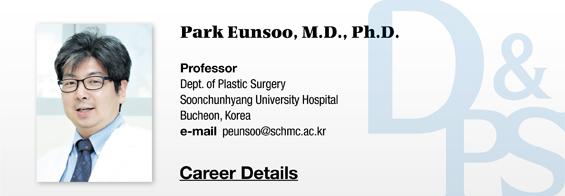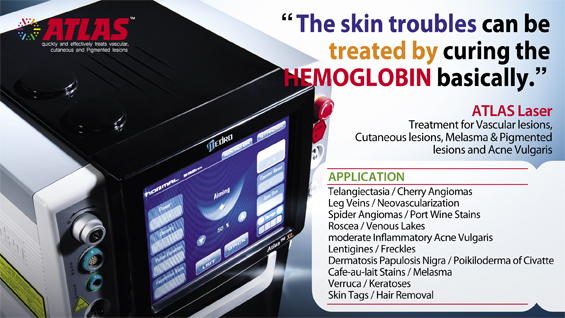▶ Previous Artlcle : #9-1. Preparation of Platelet-Rich Plasma
Harvesting Process
A general harvesting process can be described as follows:
First of all, a syringe needle of 18G or larger is preferable for blood collection, to prevent platelet damage or activation by strong aspiration or a narrow needle. Blood is collected from a relatively large vein, such as anterior cubital vein. For the separation of platelets, it has been known that acid citrate dextrose (ACD) type A is the most appropriate anticoagulant for stabilization of the platelet membrane, and low gravity force is preferable for centrifugation. In order to prevent blood coagulation, ACD type A should be charged in the syringe, before collecting blood, to create a mixture of 10cc blood and 1.4cc coagulant.
[Advertisement] ATLAS(Long pulse 532nm & 940nm dual wavelength) – Manufacturer: MEDRO(www.medro.net)
Centrifugation consists of the following 2 steps:
The first step is the separation spin, where the collected blood is centrifuged at 1,000g for 4 minutes (total 4,000g minutes), at which point, more than 95% of platelet is separated. After the centrifugation, the supernatant plasma, buffy coat and red blood cell button are transferred to another tube.
The next step is concentration spin, where the blood is centrifuged for 8-9 minutes at 800g (total 6,400-7,200g minutes). This step separates and concentrates the platelets and white blood cells. After the centrifugation, the buffy coat settles down to the bottom of the tube in solid deposits containing small amounts of red blood cells and platelets. A large amount of supernatant plasma should be eliminated to obtain a high-concentration PRP, or a little to obtain a low-density PRP.
After the first and second centrifugation of 10ml of blood, 1ml of the bottom layer containing the buffy coat is obtained. A normal adult needs to have a mean platelet count of at least 1,000,000/ul for PRP. The removed supernatant is platelet poor plasma and the remnant at the bottom layer is PRP. After removing a certain amount of the supernatant plasma, the remaining plasma and the deposits are aspirated into a syringe and then reinjected in the tube repeatedly. This step disintegrates the deposits and creates a light red, opaque liquid where red blood cells and white blood cells are mixed together.
The PRP prepared in this method contains anticoagulant, which maintains the fluid condition until coagulation starts. PRP can be stored for more than 8 hours at room temperature, but it is advisable to use within the first 8 hours.
The g value that can rupture the platelet membrane during centrifugation is 30,000g minutes. The total g values applied in the above two steps are about 1/3 of this g value, which is within the range that assures the safest and most effective separation of platelets.
The activity of the separated platelets is as important as the platelet count. Platelet activity can be examined by P-selectin test. P-selectin is a protein that is present in the membrane of alpha particle on platelets, and is released from the platelet surface, when the alpha particle membrane and platelet membrane are fused together by platelet activation.
Freshly prepared normal PRP contains 10-20% P-selectin, but the level increases up to 40-60% when treated with adenosine diphosphate (ADP), a platelet activator. If the P-selectin level does not respond to ADP, then the platelets are probably already activated or damaged.
The degree of coagulation can be measured in percentage of platelet adhesion to 200mg/m collagen fibers. No activation is defined as 60% or less.
Standard Preparation Methods with Clinical Evidence
With the recent introduction of simple preparation methods using centrifugation, PRP is widely used in the outpatient setting, as well as in operation rooms. Preparation tools and kits for this purpose are also available in the market. However, as mentioned earlier, the effect of PRP on tissue healing and regeneration is still disputable. The argument centers on whether the used PRP is valid, particularly maintenance of damage-free PRP, appropriate platelet concentration, and proper activation of platelets in the course of agglutination. It doesn`t seem, at the moment, all preparation tools in the market are capable of providing valid PRP. It is necessary to establish a systematically verified PRP preparation protocol in the clinical setting.
References
. Sadati KS, Corrado AC, Alexander RW. Platelet-rich plasma(PRP) utilized to promote greater graft volume retention in autologous fatbgarafting. Am J Cosmetic Surg. 2006 23(4) 203-211
. Cervelli V, Palla L. Pascali M, De Angelis B, Curcio BC, Gentile P. Autologous platelet-rich plasma mixed with purified fat graft in aesthetic plastic surgery. Aesthetic Plast Surg. 2009 33(5) 716-721
. Salgarello M, Visconti G, Rusciani A. Breast fat grafting with platelet-rich plasma: a comparative clinical study and current state of the art. Plast Reconstr Surg. 2011 127(60 2176-2185)
-To be continued-





















